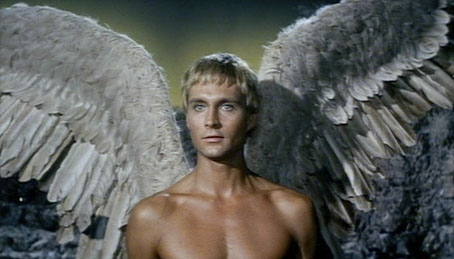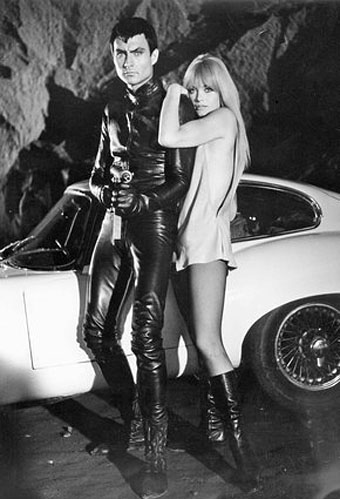When Chaplin Became the Enemy
| Monsieur Verdoux.
Category: {film}
Film
The Tell-Tale Heart from UPA
Among the legions of Poe adaptations for film and television, IMDB lists 21 versions of The Tell-Tale Heart. The UPA version from 1953 is a rare moment of seriousness from a company more well-known for its Mr Magoo and Gerald McBoing-Boing cartoons. This has long been one of my favourite Poe adaptations, not least for James Mason’s pitch-perfect narration. (A quote from this was later sampled by Scorn on the track Night Tide from their Evanescence album.) The animation avoids being too cartoony by adopting an allusive blend of Hollywood-style Surrealism and Expressionist design of the kind more usually seen in live action dream sequences of the period. Paul Julian was the designer, Pat Matthews the animator and Ted Parmelee the director.
Animator Michael Sporn has two pages of frame grabs, including some composites which show the full extent of scenes panned over during the film.
Previously on { feuilleton }
• Harpya by Raoul Servais
• William Heath Robinson’s illustrated Poe
• The art of Harry Clarke, 1889–1931
The year of rebellion: If… not when
The year of rebellion: If… not when
| Lindsay Anderson’s If… forty years on.
Harpya by Raoul Servais
Classic animated short from 1979 which is funny and creepy in equal measure. Harpya won the Palme d’Or for best short film at Cannes that year and in its own small way could be seen as continuing the Belgian taste for Symbolism and Surrealism.
Previously on { feuilleton }
• Bruges-la-Morte
• Short films by Walerian Borowczyk
• Taxandria, or Raoul Servais meets Paul Delvaux
John Phillip Law, 1937–2008
Pygar the angel, Barbarella (1968).
John Phillip Law, who died on Tuesday, was featured here last year in a look at Mario Bava’s crazy live action fumetti, Danger Diabolik (below). Law made that film the same year as he played a blind angel in an equally crazy slab of Sixties’ decadence, Barbarella. In a more serious role, he played opposite the very formidable Rod Steiger in The Sergeant which was released the same year; together with Victim, this was one of the first films I remember watching that dealt with same-sex attraction (albeit in the usual angst-ridden mode), with Law’s character being the understandable object of Steiger’s doomed affection.
After those heights, things tended to be more down than up but I do have an affection for Ray Harryhausen’s The Golden Voyage of Sinbad (1974). Law’s Sinbad was pretty good even if he spends much of the time fighting monsters while Tom Baker was great as the villainous Koura. And I always appreciated that screenwriter Brian Clemens made Lemuria the destination of the voyage, a lost continent mentioned by Madame Blavatsky and many of the Weird Tales writers, including HP Lovecraft in The Haunter of the Dark.
Danger Diabolik (1968).
Previously on { feuilleton }
• CQ
• Danger Diabolik




